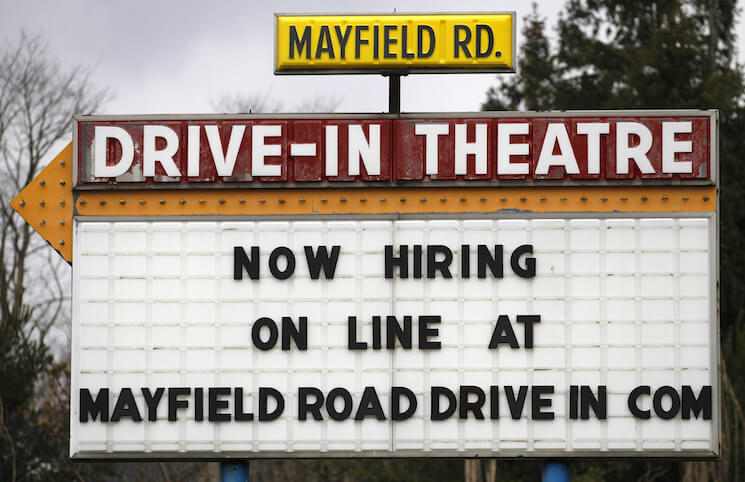A Non-Sokratic Dialogue on Social Welfare Functions: Hoisted from the Archives from 2003:
Glaukon: ‘Professor!’
Agathon: ‘Professor! Good to see you. Getting coffee?’
Glaukon: ‘Yes. I’m teaching. I find that teaching is always and everywhere a caffeine phenomenon.’
Agathon: ‘I tend to find that teaching is usually a bagel phenomenon myself. What are you going to teach them?’
Glaukon: ‘Social welfare. Utilitarianism. Condorcet. Arrow. Aggregation of preferences. Preference-revealing mechanisms.’
Agathon: ‘Sounds like a full class.’
Glaukon: ‘You have no idea.’
Agathon: ‘Be sure to teach them about the market’s social welfare function.’
Glaukon: ‘The market has a social welfare function?’
Agathon: ‘Under appropriate conditions of perfect competition, non-increasing returns, and the absence of externalities the market’s decisions about the production and allocation of goods and services attain a point on the Pareto frontier. Every point on the Pareto frontier maximizes some social welfare function.’
Glaukon: ‘Yes, of course.’
Agathon: ‘Therefore the market, considered as a collective mechanism for making social decisions, chooses to maximize a particular social welfare function. It is instructive to consider what that social welfare function is.’
Glaukon: ‘I resent the tone in which you are talking down to me.’
Agathon: ‘You do not. This part of this conversation never took place in even approximate form in the real world. It is interpolated in order to bring readers of this weblog up to speed. Since I never said my last speech to you, you could not have resented it.’
Glaukon: ‘And I want readers of this weblog to know that I am considerably smarter and more clued-in than he is letting me appear to be.’
Agathon: ‘Are you quite finished?’
Glaukon: ‘Plato at least worked harder to make his information dumps fit more gracefully into the conversation. I want a better author.
Agathon: ‘Are you quite finished?’
Glaukon: ‘Yes.’
Agathon: ‘As I was saying, the market system chooses an allocation. That allocation can only be justified under the assumption that moves along the Pareto frontier in every direction–moves that transfer wealth from one member of society to another–are of no benefit to social welfare, while moves toward the Pareto frontier do benefit social welfare. If we restrict ourselves to social welfare functions that are weighted sums of individual utilities, that means that the market system’s social welfare function gives each individual a weight inversely proportional to his or her marginal utility of wealth.’
Glaukon: ‘Didn’t somebody say about society that there was no such…’
Agathon: ‘Hush! If you want to quote Margaret Thatcher, you must introduce her as a speaking character in this dialogue and grant her some of her time…’
Glaukon: ‘I? You’re the authorial stand-in in this dialogue, not me…’
Agathon: ‘That means that the market system, in weighting utilities and adding them up, gives you a much lower utility than it gives Richard Cheney. In fact, if marginal utility of wealth is inversely proportional to the square of lifetime wealth, the market system gives Richard Cheney about 400 times as big a weight as it gives you.’
Glaukon: ‘That’s sick.’
Agathon: ‘And it gives Bill Gates a weight about 400,000,000 times as big a weight as it gives you.’
Glaukon: ‘That’s sicker.’
Agathon: ‘But it gives you about 40,000 times the weight it gives your average Bengali peasant, who thus has about 1/16,000,000,000,000 the amount of the market system’s concern as Bill Gates has. Will you teach that?’
Glaukon: ‘They’ll call me a Communist!’
Agathon: ‘But it’s true!’
Glaukon: ‘That I’m a Communist?’
Agathon: ‘No. That that’s what the market system does!’
Glaukon: ‘We are value neutral economists! We don’t care about distribution! We care about efficiency!’
Agathon: ‘But claiming that you don’t care about distribution is implicitly saying that shifts in distribution are of no account–which can be true only if the social welfare function gives everybody a weight inversely proportional to their marginal utility of wealth.’
Glaukon: ‘You’re introducing politics into a value-neutral technocratic social science.’
Agathon: ‘Politics?! Moi? I’m simply evaluating the derivatives of a social welfare function under the assumption that the market allocation is its ArgMax. What could be more technocratic than that? I’m just trying to attain a little clarity of thought.’
Thrasymachus: ‘But where rule rests not–as somebody or other said at one of Old Joseph de Maistre’s little soirees in St. Petersburg–on the hangman, but on misdirection and confusion, to strip away the veils of alienation and false consciousness that keep humans from perceiving their species-being, the act of unveiling is itself a powerfully political act.’
Agathon: ‘Are you Thrasymachus or Karl Marx?’
Thrasymachus: ‘Ah. Marx thought unveiling was a good thing. I think it is neither good nor bad, for ‘good’ like ‘justice’ is really just another word for the interest of the stronger party.’
Glaukon: ‘And we gave you tenure here at Berkeley?’
Thrasymachus: ‘Shhh! The humanities departments still think relativism is sexy. They haven’t yet figured out that to assume a position of relativism–like the claim to be neutral on issues of distribution–is really a statement that you are on the side of the powerful.’
Agathon: ‘And are you?’
Thrasymachus: ‘It is the just and the good–or, rather, the ‘just’ and the ‘good’–thing to do.



